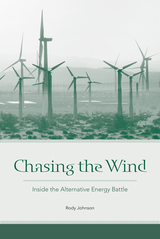
have ignited contentious global debates about alternative energy technologies. In this lucid,
balanced book, Rody Johnson investigates the development and deployment of one
such technology—wind power—and, in particular, the ways in which a heated battle over
that energy source played out in an Appalachian community.
Johnson’s wide-ranging account examines the history of wind power; its capacity and
output in comparison to such sources as fossil fuels, other renewables, and nuclear energy;
the infrastructural challenges of transmitting electricity from wind farms to end users;
global efforts to curb carbon emissions, including the Kyoto treaty; the role of public
policy, government subsidies, and tax breaks; and the differences and similarities between
wind power regimes in the United States and Europe.
Interwoven throughout this discussion is the compelling narrative of how, beginning
in 2005, the proposed construction of a wind farm along mountain ridges in Greenbrier
County, West Virginia, pitted locals against each other—a story that puts a human face on
the arguments about wind power’s promise of clean, renewable energy and its potentially
negative effects, including bird and bat kills, a disfigured natural landscape, and noise
pollution. Drawing on countless hours he spent attending public meetings and interviewing
those on both sides of the issue, Johnson not only pictures the Greenbrier County
struggle in illuminating detail but also makes valuable comparisons between it and similarly
pitched battles in another West Virginia county, where a wind farm had already been
built, and in Florida, where plans to erect beachside wind turbines next to a nuclear plant
faltered.
Concluding with a thoughtful, realistic assessment of a 2012 study suggesting that
the country has the capability of receiving 80 percent of its electrical generation from
renewables by 2050, Chasing the Wind makes a vital contribution to the ongoing dialogue
regarding America’s energy challenges and what is likely required to meet them.
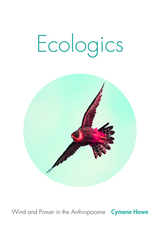
In her volume, Ecologics, Howe narrates how an antidote to the Anthropocene became both failure and success. Tracking the development of what would have been Latin America's largest wind park, Howe documents indigenous people's resistance to the project and the political and corporate climate that derailed its renewable energy potential. Using feminist and more-than-human theories, Howe demonstrates how the dynamics of energy and environment cannot be captured without understanding how human aspirations for energy articulate with nonhuman beings, technomaterial objects, and the geophysical forces that are at the heart of wind and power.
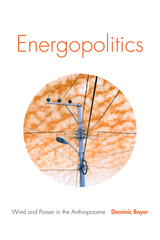
In his volume, Energopolitics, Boyer examines the politics of wind power and how it is shaped by myriad factors, from the legacies of settler colonialism and indigenous resistance to state bureaucracy and corporate investment. Drawing on interviews with activists, campesinos, engineers, bureaucrats, politicians, and bankers, Boyer outlines the fundamental impact of energy and fuel on political power. Boyer also demonstrates how large conceptual frameworks cannot adequately explain the fraught and uniquely complicated conditions on the isthmus, illustrating the need to resist narratives of anthropocenic universalism and to attend to local particularities.
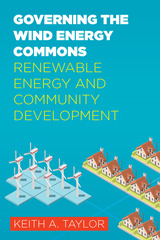
Wind energy is often framed as a factor in rural economic development, an element of the emerging “green economy” destined to upset the dominant greenhouse- gas-emitting energy industry and deliver conscious capitalism to host communities. The bulk of wind energy firms, however, are subsidiaries of the same fossil fuel companies that wrought havoc in shale-gas and coal-mining towns from rural Appalachia to the Great Plains. On its own, wind energy development does not automatically translate into community development.
In Governing the Wind Energy Commons, Keith Taylor asks whether revenue generated by wind power can be put to community well-being rather than corporate profit. He looks to the promising example of rural electric cooperatives, owned and governed by the 42 million Americans they serve, which generate $40 billion in annual revenue. Through case studies of a North Dakota wind energy cooperative and an investor-owned wind farm in Illinois, Taylor examines how regulatory and social forces are shaping this emerging energy sector. He draws on interviews with local residents to assess strategies for tipping the balance of power away from absentee-owned utilities.
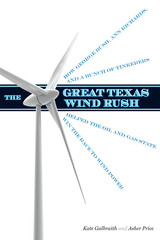
In the late 1990s, West Texas was full of rundown towns and pumpjacks, aging reminders of the oil rush of an earlier era. Today, the towns are thriving as 300-foot-tall wind turbines tower above those pumpjacks. Wind energy has become Texas’s latest boom, with the Lone Star State now leading the nation. How did this dramatic transformation happen in a place that fights federal environmental policies at every turn? In The Great Texas Wind Rush, environmental reporters Kate Galbraith and Asher Price tell the compelling story of a group of unlikely dreamers and innovators, politicos and profiteers.
The tale spans a generation and more, and it begins with the early wind pioneers, precocious idealists who saw opportunity after the 1970s oil crisis. Operating in an economy accustomed to exploiting natural resources and always looking for the next big thing, their ideas eventually led to surprising partnerships between entrepreneurs and environmentalists, as everyone from Enron executives to T. Boone Pickens, as well as Ann Richards, George W. Bush and Rick Perry, ended up backing the new technology. In this down-to-earth account, the authors explain the policies and science that propelled the “windcatters” to reap the great harvest of Texas wind. They also explore what the future holds for this relentless resource that is changing the face of Texas energy.
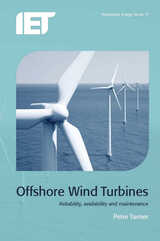
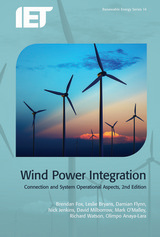
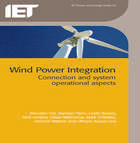
READERS
Browse our collection.
PUBLISHERS
See BiblioVault's publisher services.
STUDENT SERVICES
Files for college accessibility offices.
UChicago Accessibility Resources
home | accessibility | search | about | contact us
BiblioVault ® 2001 - 2024
The University of Chicago Press









